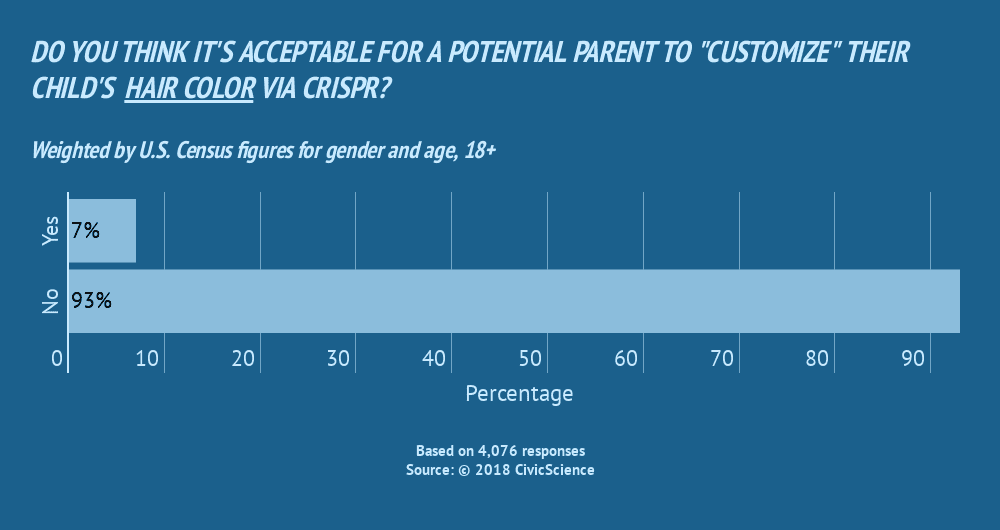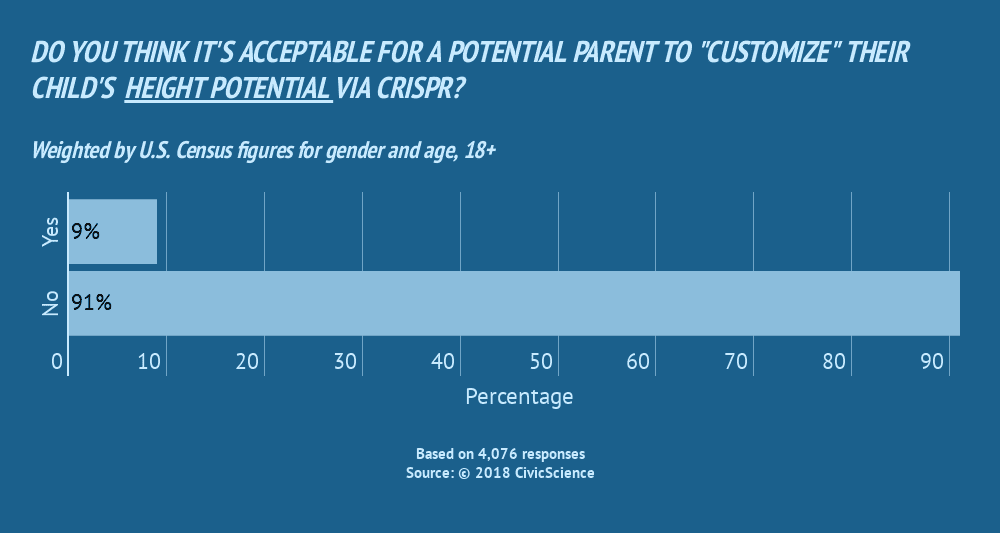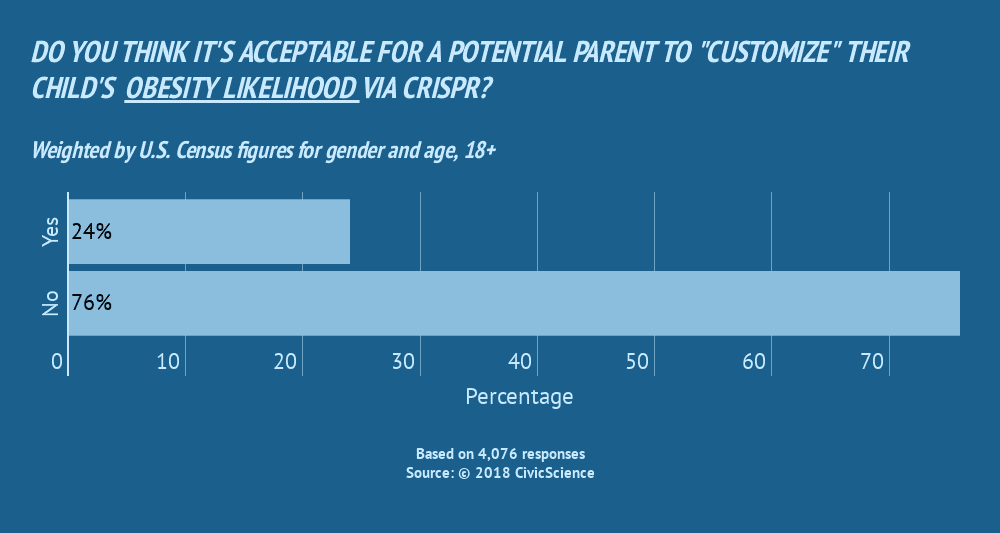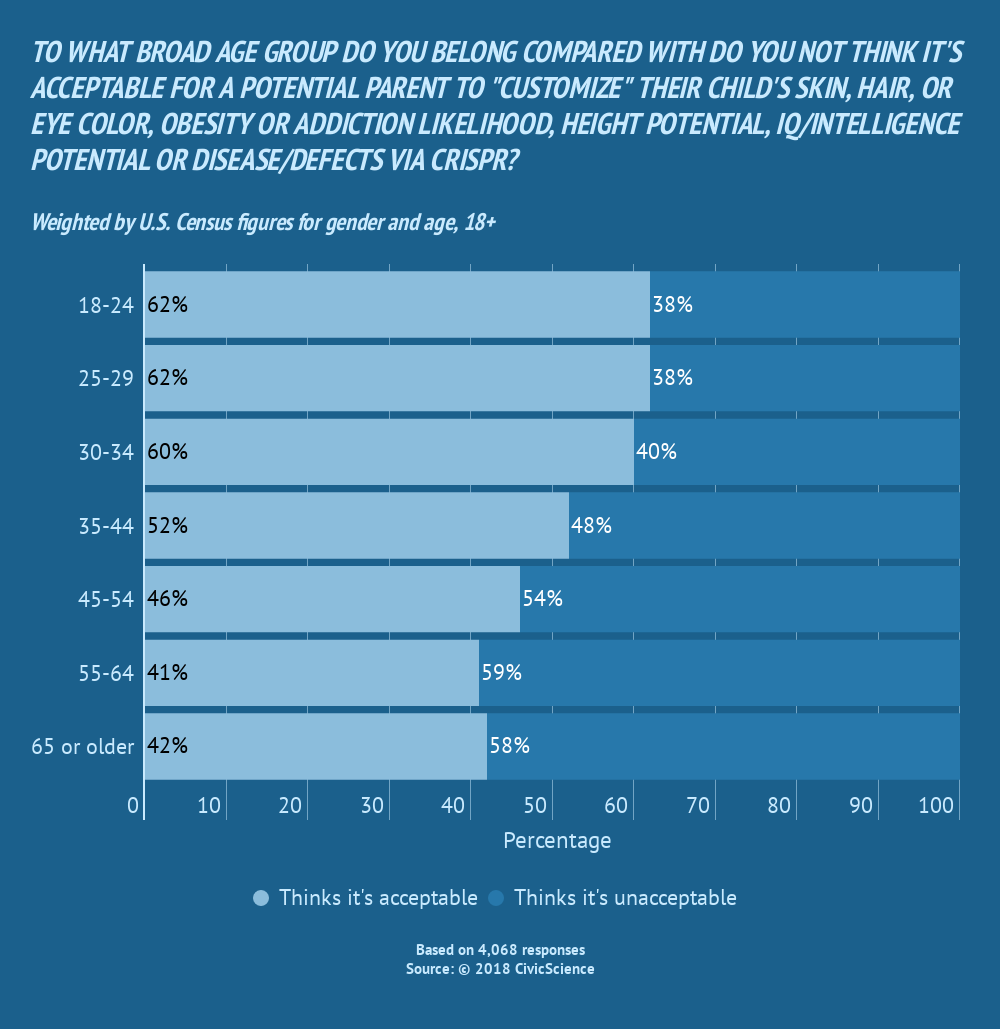Last week, a Chinese researcher claimed to have modified the DNA of two embryos to be resistant to HIV. It was the first time anyone used the breakthrough gene modification technology, CRISPR, on human embryos that resulted in pregnancy and birth.
The controversial study has been denounced by many leading scientists and is under investigation for potentially violating Chinese law; replicating the study isn’t even sanctioned in many countries. Still, the message it sends is loud: CRISPR, and more broadly, human genetic modification, is something we should all be talking about.
CRISPR technology (specifically the “CRISPR-Cas9” system), which works by cutting out and replacing targeted gene sequences in the DNA of any living thing with an unprecedented degree of precision, has spurred research across the board — anywhere from developing Malaria-resistant mosquitoes and new crop strains, to treating genetic defects and certain diseases in addition to HIV, including muscular dystrophy and cancer.
As research grows, so too do the safety and ethical concerns over CRISPR’s potential, such as one day using the technology to enhance babies.
In an online 2017-2018 survey of more than 4,000 U.S. adults, CivicScience probed public feelings on the potential for using CRISPR to modify, or ‘edit’, the DNA of embryos.
One of the survey questions asked if it was acceptable for a parent to use CRISPR to alter a child’s likelihood to develop diseases or genetic defects.
The result? It turns out that the majority of respondents are not in favor, yet only by a slim margin. A significant portion (43%) of survey respondents would support using CRISPR to affect disease outcomes, indicating that the public is heavily divided over the issue.
However, that’s not the case regarding the potential to modify other traits, such as eye color, gender, intelligence, or susceptibility to addiction and obesity. Here is a rundown of what the study found, starting from the bottom of the barrel.
Least Accepted — CRISPR for Eye Color, Hair Color, Skin Color, Height
The survey revealed an overwhelming disapproval for using CRISPR to alter eye color, hair color, skin color, or height potential of embryos; only 6-9% of respondents find it acceptable, with skin color being the least acceptable trait to alter.
IQ /Intelligence
Next is intelligence. The possibility of modifying the potential for IQ or intelligence through CRISPR or other gene modification techniques may be far-fetched right now, given that there are a multitude of genes responsible for an individual’s intelligence.
Still, U.S. adults aren’t exactly cozying up to the idea. However, they are about twice as likely to be okay with modifying intelligence than they are with modifying hair color, eye color, or height.
Addiction and Obesity
Addiction and obesity are two conditions that researchers are linking to genes. On average, about one-quarter of U.S. adults surveyed feel that it would be acceptable to curtail addiction and obesity through CRISPR modification. While that is not an insignificant percentage for such a nascent technology, it is far less accepted than using the technology to fight disease and genetic defects as listed above.
Even so, it’s likely that the higher rate of acceptance for addiction taps into troubling concerns over the sharp rise in opioid-related deaths in the U.S., which may be fueling the drop in life span recently reported by the CDC.
Gender
Then, there’s gender. In a separate survey of 963 U.S. adults, CivicScience looked at the ability to alter an embryo’s gender through gene modification, finding that only 16% were open to the idea.
Demographic Highlights
When it comes to acceptance of embryo modification via CRISPR, who’s behind the numbers? The study revealed a few key trends among the population.
- Women are less accepting than men. Looking at overall acceptance, the survey indicates that women are slightly more likely than men to think that any and all types of embryo modification addressed in the survey are unacceptable.
- Young people are much more likely to be accepting. Check out the bar chart below, and it’s clear that young adults (who happen to fall under the Millennial category) are the most open to the possibility of using CRISPR to modify genes in embryos. A solid 62% of both 18-24 and 25-29 year-olds and 60% of 30-34-year-olds agree that it’s acceptable in some form, compared to 41-42 % of those 55 and older.
- Parents are less accepting. While greater acceptance among young adults may relate to a higher adoption rate of new technologies in general, parental status figures into it as well. As a whole, parents of all age groups show to be less accepting than non-parents. That includes Millennial parents, too.
Looking Ahead
The concept of “designer babies” is nothing new. While largely focused on genetic disease, new screening technologies already offer the 1-2% of American parents undergoing in-vitro fertilization (IVF) greater ability to select embryos with certain genes. Some celebrities have been in the public eye for choosing their baby’s gender through IVF.
Based on the result of past studies, it’s likely that concerns with CRISPR modification seen in the survey also echo similar concerns with IVF. The public is much more accepting of using the technology in combating disease than in enhancement or gender selection.
However, CRISPR’s radically different and more direct approach to genetic optimization brings with it uncharted territory and a host of unknowns that likely feed into acceptance rates. Some researchers say that the idea of enhancing babies using CRISPR is unrealistic due to the sheer number of genes that code for things like intelligence or height. Many warn of potential repercussions that could come with editing embryos to prevent diseases at this stage in the technology’s development.
With a rapidly growing market expected to triple in value by 2023, the race is on to figure out policies and regulations surrounding CRISPR — a place where public perception could play a powerful role.



















